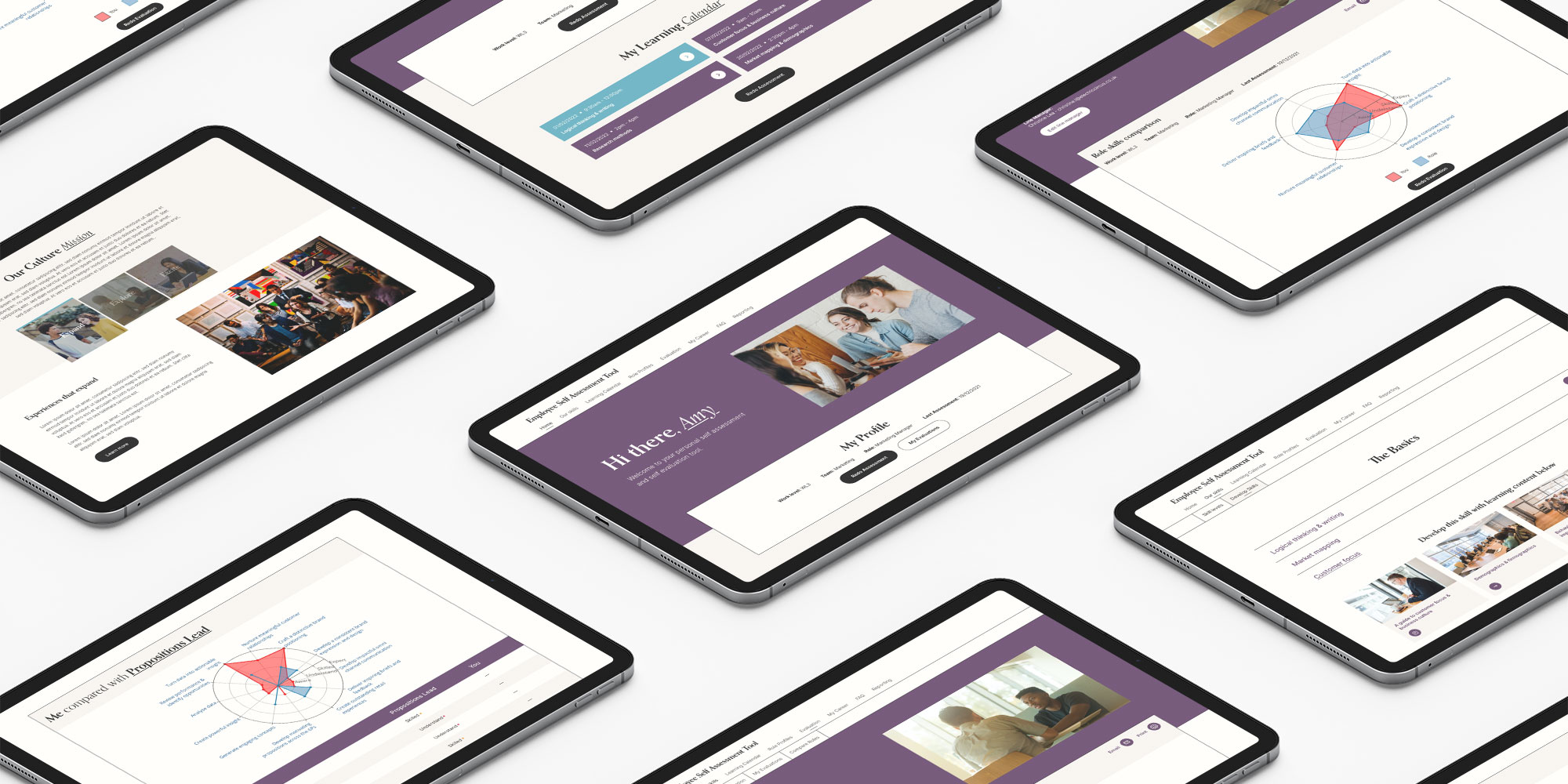Part 4

Part 4 - The penultimate
What’s the secret to empowering more of your people to take ownership of their learning to develop their careers? What if you could inspire and motivate them by clearly showing how they can build on their current skills to achieve their goals? Read on to find out how…
An important part of personal development reviews is not only to assess how someone is performing in their role, but where they need to or how they would like to improve. But as well as assessing the skills they have now, what if they could see where else those skills could be transferable?
When it comes to helping employees think about their longer-term career aspirations, some may be 100 percent focused on what they want to do. Others may be stuck, not really knowing what they want to do or where they want to go. People need to see what opportunities are available to them, so they can be inspired to decide where they want to get to. And they need to see a clear path of how to get there too.
In this series we’ve already talked about inspiring them by showing them the careers they could have in your business. We’ve also talked about giving them easy access to learning resources to help them develop the skills they need for their next role or longer-term career aspirations.
But what if they could see where they already have some of the skills needed and where there’s room for improvement? Not only would it empower them to prioritise their learning to plug the gaps, they’ll also be motivated knowing they’re partly on their way there.
That’s where our self-assessment skills tool can help. It enables employees to rate themselves in a number skills areas and it maps these against the skills required for other roles in your company. It’s simple, effective, empowering and inclusive. And it’s a solution that’s already working for some of our clients.

It’s widely accepted that there are differences in how people rate themselves according to their gender, culture or even socio-economic background. Some people will always rate themselves highly on everything and others will be more modest. This leads to an inevitable imbalance when it comes to the diversity of people in senior positions.
The beauty of our skills assessment tool is in the manager validation process. It gives everyone the opportunity to rate themselves based on their skills in the job they’re in and the job they want. But balance is brought when their manager validates their assessment with their own ratings. The results form the basis of a development review meeting. Together, employee and manager can create a development plan with ambitious but achievable goals.
And it works too. Before the manager validation is added, women rate their skills much lower than men, and vice-versa, with men being much more confident in their abilities.
It’s widely accepted that there are differences in how people rate themselves according to their gender, culture or even socio-economic background. Some people will always rate themselves highly on everything and others will be more modest. This leads to an inevitable imbalance when it comes to the diversity of people in senior positions.
The beauty of our skills assessment tool is in the manager validation process. It gives everyone the opportunity to rate themselves based on their skills in the job they’re in and the job they want. But balance is brought when their manager validates their assessment with their own ratings. The results form the basis of a development review meeting. Together, employee and manager can create a development plan with ambitious but achievable goals.
And it works too. Before the manager validation is added, women rate their skills much lower than men, and vice-versa, with men being much more confident in their abilities.
Some people may get disheartened by the linear options they see ahead in their own team, so allowing people to move across functions into different roles keeps them motivated. Why not let your employees squiggle their way through your business, picking up different experiences that all make for a more dynamic team culture?
It’s a misconception that you always have to hire external talent into your business. It’s easy to look at the technical skills that are requested – but not necessarily required – for a role and decide you don’t have the skills you need in the business. Of course you don’t, because if there was anyone with those specific skills, they’d be doing the job for you already.
Wise leaders don’t underestimate or make assumptions about the skills their people have – and they’re not bound by employees’ job descriptions. Mapping their core and specialist skills against other roles in other departments can help identify hidden talent.
Of course, getting hiring managers to be more flexible in their requirements is a different challenge. As is getting them to change their mindset to be more welcoming and supportive to developing internal talent. But these are the shifts that internal mobility is reliant upon.
At Electric Circus we’re an experience-led team. We understand the challenges of recruiting, retaining and developing talent. Our expertise blends creativity, digital solutions and communications strategy to create experiences that engage and connect with your employees through every phase of the talent lifecycle.
Whether you’ve read something intriguing about what we’ve done for other companies, or you’ve got a challenge that you can’t get your head around. Or even if you just want to know where we got our name.
We’re always happy to chat. Get in touch below.